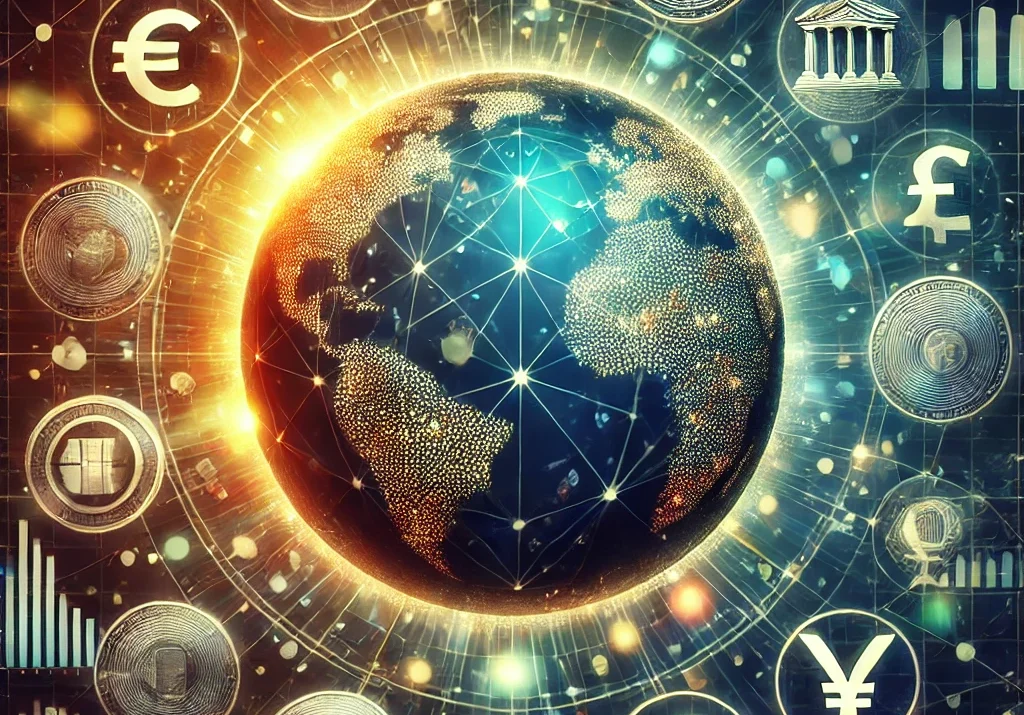The total amount of money in the world is a constantly evolving figure due to global economic changes, inflation, and financial policies. Money exists in various forms, from physical cash to digital currencies and investments. Understanding how much money exists worldwide requires examining multiple categories, such as physical currency, bank deposits, and financial assets.
Forms of Money: Physical vs. Digital
Money takes different forms, each with unique characteristics and impact on the total global supply. Generally, money is divided into physical currency and digital or electronic forms.
| Type of Money | Description | Examples |
|---|---|---|
| Physical Money | Tangible items like coins and bills | Cash, coins |
| Digital Money | Electronic form of currency | Bank transfers, cryptocurrencies |
1. Physical Money (M0)
Physical money, also known as M0, includes coins and paper currency circulating among the public. According to estimates, as of recent years, around $7-8 trillion exists in physical cash globally. This form of money represents the tangible assets used in daily transactions but accounts for a small percentage of the total money supply. Physical money is issued by central banks worldwide and represents immediate liquidity for individuals and businesses.
- Cash on Hand: Money you can hold physically, such as banknotes and coins.
- Limited Supply: Physical money is limited compared to digital assets, as producing cash requires resources and regulations by central banks.
2. Digital Money (M1, M2, M3)
Digital money includes everything from deposits in banks to digital currencies and encompasses a broad range of money classifications. Bank deposits and electronic transfers form a larger share of the money supply than physical cash, making up $90 trillion or more, depending on how money is classified.
- M1: This category includes physical currency, demand deposits, and other assets that can be quickly converted to cash. Estimated to be around $50 trillion globally.
- M2: Adds savings accounts, time deposits, and other near-money assets to M1. The global M2 supply is estimated at over $100 trillion.
- M3: Incorporates M2 and other large, long-term deposits and forms of institutional money. M3 is broader and varies by country but adds significant value to the total global money supply.


What Constitutes Global Wealth?
To understand global wealth, we need to consider all assets that contribute to it, including cash, investments, and real estate. These factors reveal the total amount of value, not just currency, that exists worldwide.
1. Financial Assets and Investments
Financial assets include stocks, bonds, and other investments, often traded on global markets. The total market value of global financial assets is estimated to be over $300 trillion. Stocks and bonds are crucial as they represent ownership in corporations or governments, thus adding a large part of global wealth.
- Stock Market Value: The combined market capitalization of global stock exchanges exceeds $100 trillion.
- Bond Market Value: Bonds, representing government and corporate debt, add around $130 trillion to global wealth.
2. Real Estate Assets
Real estate, encompassing both residential and commercial properties, is a significant contributor to total wealth. The estimated global real estate market value stands at around $325 trillion, making it one of the largest asset categories in the world.
- Residential Property: Housing markets contribute a considerable portion, especially in major economies like the U.S. and China.
- Commercial Property: Office spaces, industrial facilities, and retail properties are also included, adding billions in value.
3. Gold and Precious Metals
Gold and other precious metals, held by governments, banks, and individuals, also contribute to the world’s total wealth. With over 190,000 tons of gold in existence, valued at around $11 trillion, precious metals remain a stable asset in global finances.
- Gold Reserves: Held by central banks, gold is a traditional hedge against economic instability.
- Other Precious Metals: Metals like silver and platinum are also valued, contributing billions to global wealth.
Money in Emerging Forms: Cryptocurrency and Digital Assets


Cryptocurrency has become a notable addition to global wealth, especially with the rise of Bitcoin and other digital assets. As of recent estimates, the total cryptocurrency market cap hovers around $1 trillion, though this number is highly volatile due to the nature of digital currencies.
1. Bitcoin and Major Cryptocurrencies
Bitcoin, the first decentralized cryptocurrency, holds the largest market share and is valued at over $500 billion alone. Other prominent cryptocurrencies, like Ethereum, add substantial value as well.
2. Stablecoins and Central Bank Digital Currencies (CBDCs)
Stablecoins like USDT and digital currencies issued by central banks (CBDCs) aim to bridge the gap between traditional and digital finance. Although small compared to fiat money, they are gaining traction in global finance.
How Much Money Exists in Total?
By combining all forms of currency, financial assets, real estate, and digital assets, we can approximate the total value of money and assets in the world.
- Physical and Digital Money (M0, M1, M2): Combined, they total around $150 trillion.
- Global Financial Assets: Stocks, bonds, and other financial instruments add over $300 trillion.
- Real Estate: Valued at approximately $325 trillion.
- Gold and Precious Metals: Around $11 trillion.
- Cryptocurrencies: Roughly $1 trillion, though volatile.
The total amount of global assets, including currency, real estate, and investments, reaches over $700 trillion ($662 trillion, according to worldpopulationreview.com). This figure represents a broad measure of wealth worldwide, encapsulating all asset types that hold value, either for liquidity, investment, or security.
Related articles:
Which savings account will earn you the least money?
Which Savings Account Will Earn You the Most Money?
Sources:
- https://worldpopulationreview.com/metrics/how-much-money-is-in-the-world
- https://www.under30ceo.com/how-much-money-is-there-in-the-world/
- https://www.visualcapitalist.com/all-of-the-worlds-money-and-markets-in-one-visualization-2020/










